In the heart of Nara, where time seems to slow down amidst ancient temples and lush greenery, stands the majestic Todai-ji Temple, home to a towering Buddha statue that silently witnesses centuries of history unfold.
As visitors wander through this city that blends the past seamlessly with the present, a sense of wonder and curiosity fills the air, beckoning them to uncover more treasures hidden within Nara’s historical tapestry.
Key Takeaways
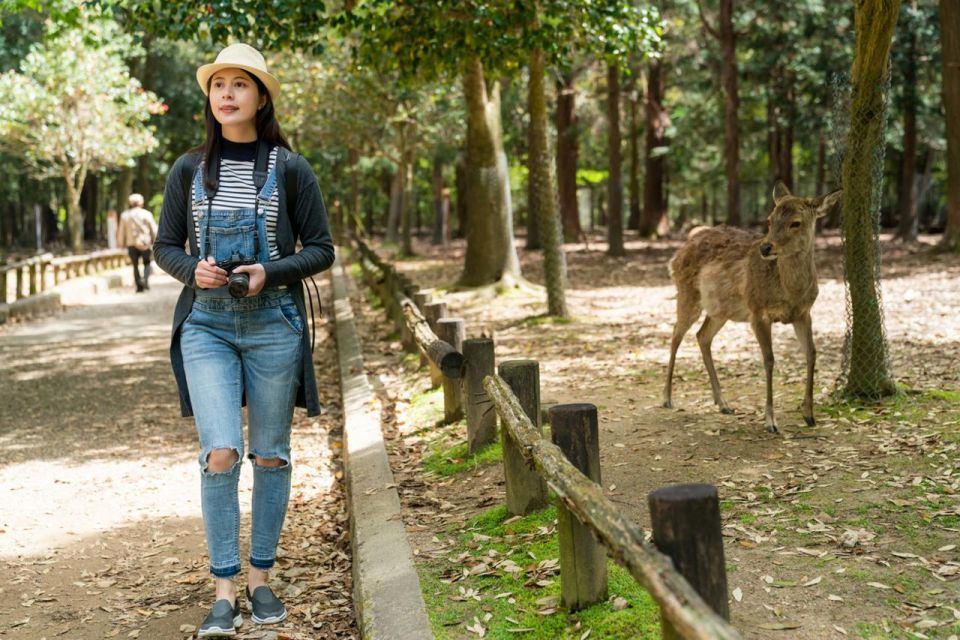
- Explore iconic sites like Todai-ji Temple and Nara Park, immersing in Japan’s rich cultural heritage.
- Interact with friendly deer, visit historic shrines, and marvel at UNESCO-listed Horyu-ji Temple.
- Discover Nara’s spiritual essence through temples like Kofuku-ji and Yakushiji, and the serene Isuien Garden.
- Journey through time at Heijō Palace Site Historical Park and delve into Japan’s history at Nara National Museum.
Nara’s Rich Cultural Heritage

Nara’s rich cultural heritage resonates through its well-preserved temples and shrines, showcasing Japan’s ancient traditions and spiritual legacy. The city’s cultural traditions are deeply intertwined with its natural beauty, creating a harmonious blend that captivates visitors.
From the intricate architecture of Kofuku-ji Temple to the serene surroundings of Yakushi-ji Temple, Nara offers a glimpse into Japan’s historical roots. The city’s cultural tapestry is woven with reverence for nature, evident in its sacred sites nestled amidst picturesque landscapes.
Visitors can immerse themselves in the spiritual essence of Nara, where cultural traditions honor the past while embracing the natural world. This fusion of heritage and environment makes Nara a unique destination that celebrates Japan’s rich history and breathtaking scenery.
Todai-ji Temple: Giant Buddha
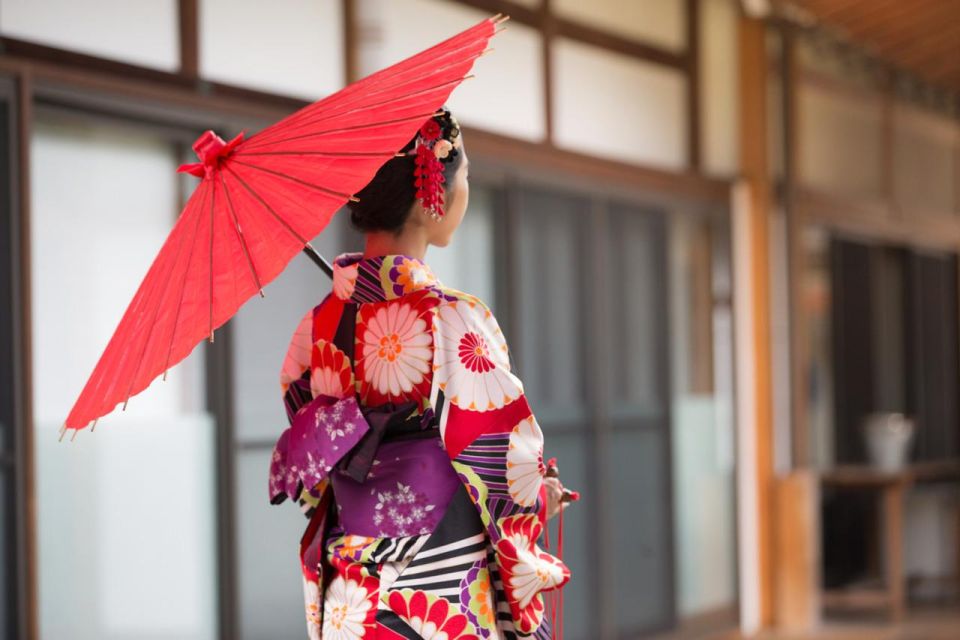
Todai-ji Temple in Nara houses a magnificent Giant Buddha statue, drawing visitors from around the world to witness its grandeur. The Giant Buddha holds immense significance, symbolizing the teachings of Buddhism and the power of enlightenment. This awe-inspiring statue stands at an impressive height, showcasing the skill and artistry of ancient craftsmen.
The temple’s architecture, characterized by intricate wooden structures and traditional design elements, creates a serene atmosphere conducive to contemplation and reflection. Visitors can marvel at the sheer size and spiritual essence of the Buddha, appreciating the cultural and religious heritage it represents.
Todai-ji Temple not only captivates with its colossal statue but also with its architectural mastery, offering a glimpse into Japan’s rich history and spiritual traditions.
Interacting With Nara’s Deer
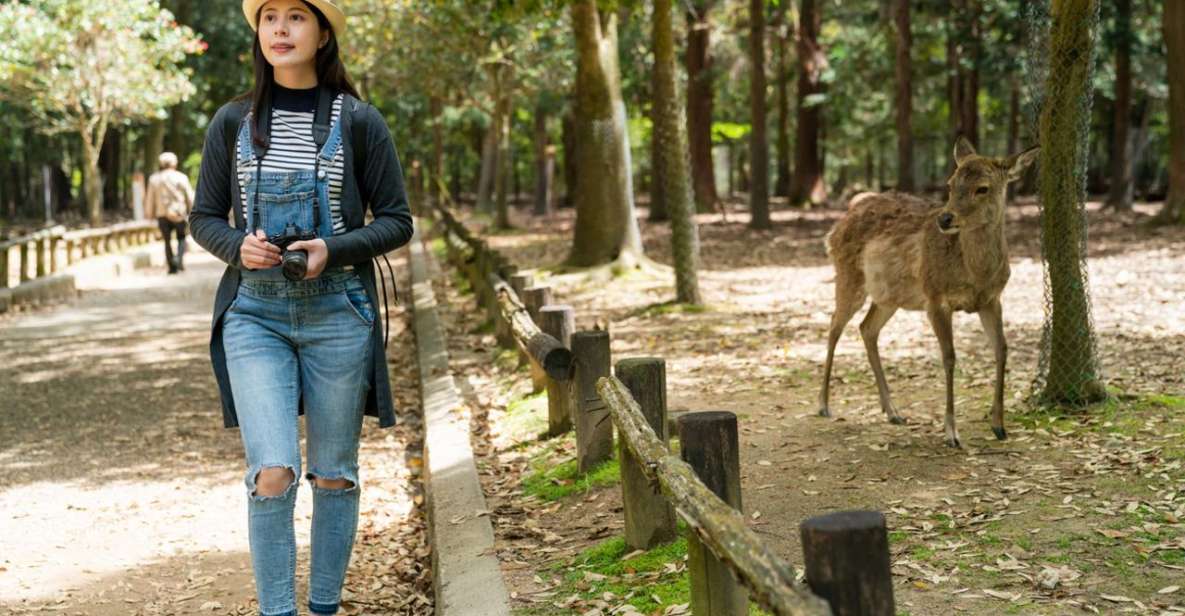
Visitors can enjoy engaging with the friendly deer roaming freely in Nara Park. These deer are a beloved symbol of the city and are known for their gentle demeanor. Observing their behavior is a delightful experience, as they interact with each other and visitors in a playful manner.
It’s common to see them bowing to ask for deer crackers, a popular snack sold in the park. Their feeding habits are interesting to watch, with the deer eagerly approaching anyone holding food. Remember to feed them with the designated deer crackers to maintain their health and prevent overfeeding.
Interacting with Nara’s deer adds a unique and memorable dimension to the visit, creating lasting memories for all who encounter these charming animals.
Kasuga Taisha Shrine Experience
Nestled amidst the serene surroundings of Nara Park, the Kasuga Taisha Shrine offers visitors a captivating blend of history and spirituality. The shrine’s architectural beauty and sacred rituals provide a profound cultural experience for those who visit.
Here are some key highlights of the Kasuga Taisha Shrine experience:
-
Architectural Beauty: The shrine’s vermilion-lacquered buildings adorned with intricate wood carvings stand as a testament to ancient Japanese craftsmanship.
-
Sacred Rituals: Witness traditional Shinto ceremonies and rituals that have been preserved for centuries, offering a glimpse into Japan’s spiritual practices.
-
Stone Lanterns: Marvel at the thousands of stone lanterns lining the pathways, creating a mystical atmosphere during evening visits.
-
Nature Integration: The shrine’s location within Nara Park allows visitors to appreciate the seamless integration of architecture with the natural surroundings.
UNESCO-listed Horyu-ji Temple
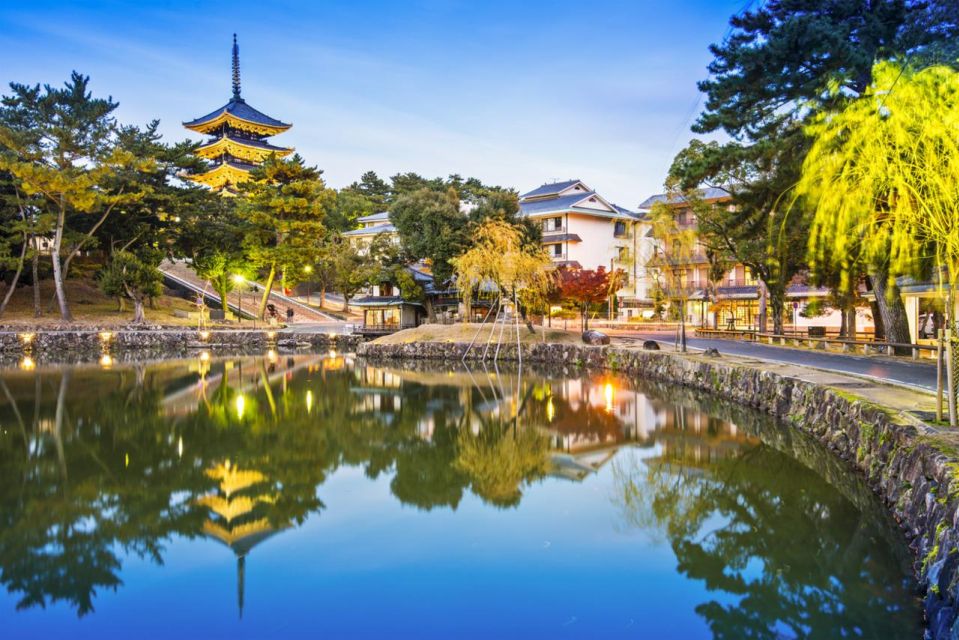
The UNESCO-listed Horyu-ji Temple, renowned for its ancient architecture and historical significance, stands as a testament to Japan’s rich cultural heritage. This temple, located in Ikaruga, Nara Prefecture, is one of the oldest wooden structures in the world, dating back to the early 7th century. Its architectural style reflects the Asuka period, showcasing intricate wooden construction techniques that have withstood the test of time.
Horyu-ji isn’t only a marvel of ancient architecture but also a repository of Buddhist treasures, housing a vast collection of artifacts, scriptures, and sculptures of immense historical value. Visitors can explore the temple’s two main pagodas, treasure houses, and surrounding gardens to immerse themselves in Japan’s spiritual and artistic legacy.
Exploring Naramachi District
Amidst the traditional streets and historic charm of Naramachi District, one can find a blend of cultural heritage and local craftsmanship waiting to be discovered. This area offers a unique window into Nara’s past, showcasing traditional architecture and a vibrant culinary scene that captivates visitors.
Explore the essence of Naramachi through:
- Well-preserved examples of traditional architecture that reflect the town’s rich history.
- Delightful local cuisine options, providing a taste of authentic flavors and culinary traditions.
- Charming shops and galleries offering handmade crafts and souvenirs that highlight local craftsmanship.
- Quaint streets and alleys that invite visitors to wander and immerse themselves in the district’s timeless atmosphere.
Kofuku-ji and Yakushiji Temples
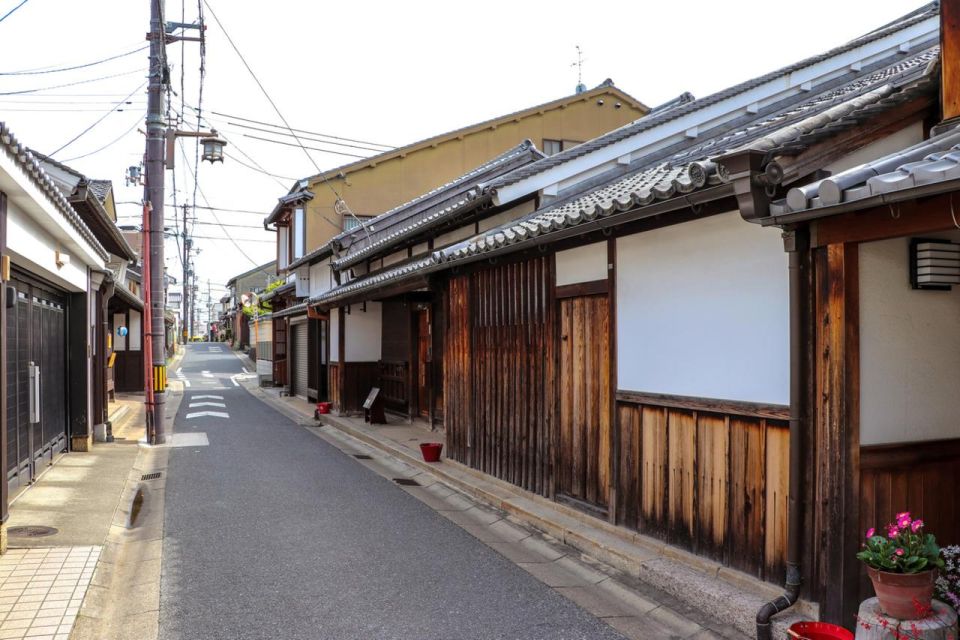
With their towering pagodas and intricate architectural details, Kofuku-ji and Yakushiji Temples stand as majestic symbols of Japan’s rich cultural heritage.
Kofuku-ji Temple, originally established in 669, is renowned for its impressive five-story pagoda and beautiful temple architecture. This temple complex houses numerous Buddhist relics and treasures, offering visitors a glimpse into the religious significance of the area.
Yakushiji Temple, founded in the 7th century, features a striking pagoda and exquisite wooden structures that showcase intricate craftsmanship. Visitors can explore the serene grounds and appreciate the historical and spiritual importance of these ancient temples.
Both Kofuku-ji and Yakushiji Temples provide a unique opportunity to immerse oneself in Japan’s profound religious traditions and architectural splendor.
Nara National Museum Exploration
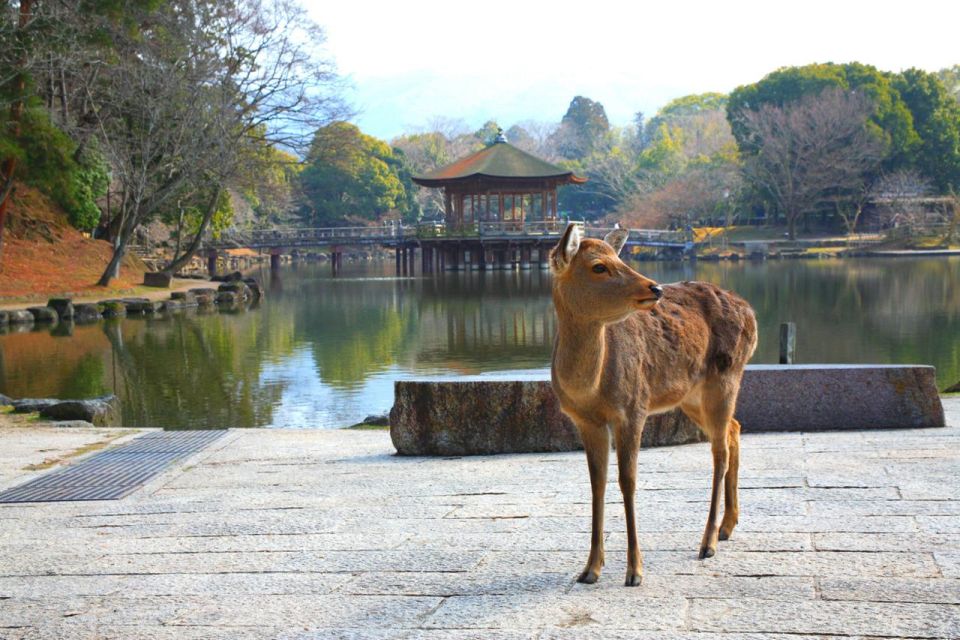
Discover the vibrant tapestry of Japanese art and culture at Nara National Museum as you delve into its rich collection of historical treasures. The museum offers a fascinating exploration of artifacts and Japanese architecture, providing visitors with a deep insight into the country’s heritage. Here are four highlights of the Nara National Museum experience:
-
Artifacts Galore: Immerse yourself in a diverse array of historical artifacts, ranging from intricate ceramics to exquisite Buddhist sculptures.
-
Architectural Marvels: Marvel at the stunning Japanese architecture showcased in the museum’s displays, reflecting the country’s unique design styles.
-
Cultural Insights: Gain a deeper understanding of Japan’s artistic traditions and cultural practices through the museum’s curated exhibitions.
-
Educational Experience: Engage in a thought-provoking journey through Japan’s past, guided by the museum’s informative displays.
Frequently Asked Questions
What Is the Best Time of Year to Visit Nara to Avoid Crowds?
The best time to visit Nara to avoid crowds is during the off-peak season, typically in late fall or winter. These quieter periods offer a more serene experience compared to the peak season when tourist influx is high.
Are There Any Local Restaurants Near These Historical Sites That You Recommend for Lunch?
Local cuisine enthusiasts will find delightful dining options near the historical sites in Nara. From cozy eateries serving traditional Japanese dishes to charming cafes offering cultural experiences, visitors can savor a range of flavors and atmospheres for lunch.
Is There a Specific Dress Code or Etiquette Visitors Should Be Aware of When Visiting These Temples and Shrines?
When visiting temples and shrines in Nara, visitors should dress modestly, removing hats and shoes when required. Respect cultural norms by refraining from loud behavior, touching artifacts, or taking photos where prohibited. Follow etiquette and traditional customs to honor the sacred spaces.
Are There Any Special Events or Festivals That Take Place in Nara That Visitors Should Know About?
Various cultural celebrations and unique festivals grace Nara throughout the year, showcasing local traditions and seasonal events. Visitors can immerse themselves in vibrant festivities like the Omizutori Water-Drawing Ceremony at Todai-ji Temple and the Nara Tokae Lantern Festival.
Are There Any Hidden Gems or Lesser-Known Historical Sites in Nara That Are Worth Visiting?
Hidden treasures in Nara include the rarely visited Nigatsu-do Hall at Todai-ji Temple and the serene gardens of Isuien and Yoshikien. Off the beaten path spots like the ancient Asuka village offer unique historical charm.
Conclusion
Discover the magic of Nara’s historical wonders on this unforgettable journey through time and nature. From the iconic Todai-ji Temple to the charming Naramachi district, each stop offers a unique glimpse into Japan’s rich cultural heritage.
Interact with friendly deer, explore UNESCO-listed temples, and immerse yourself in the spiritual sites of Nara. Don’t miss the opportunity to uncover the layers of history that have shaped this enchanting destination into a cultural tapestry of Japan.
